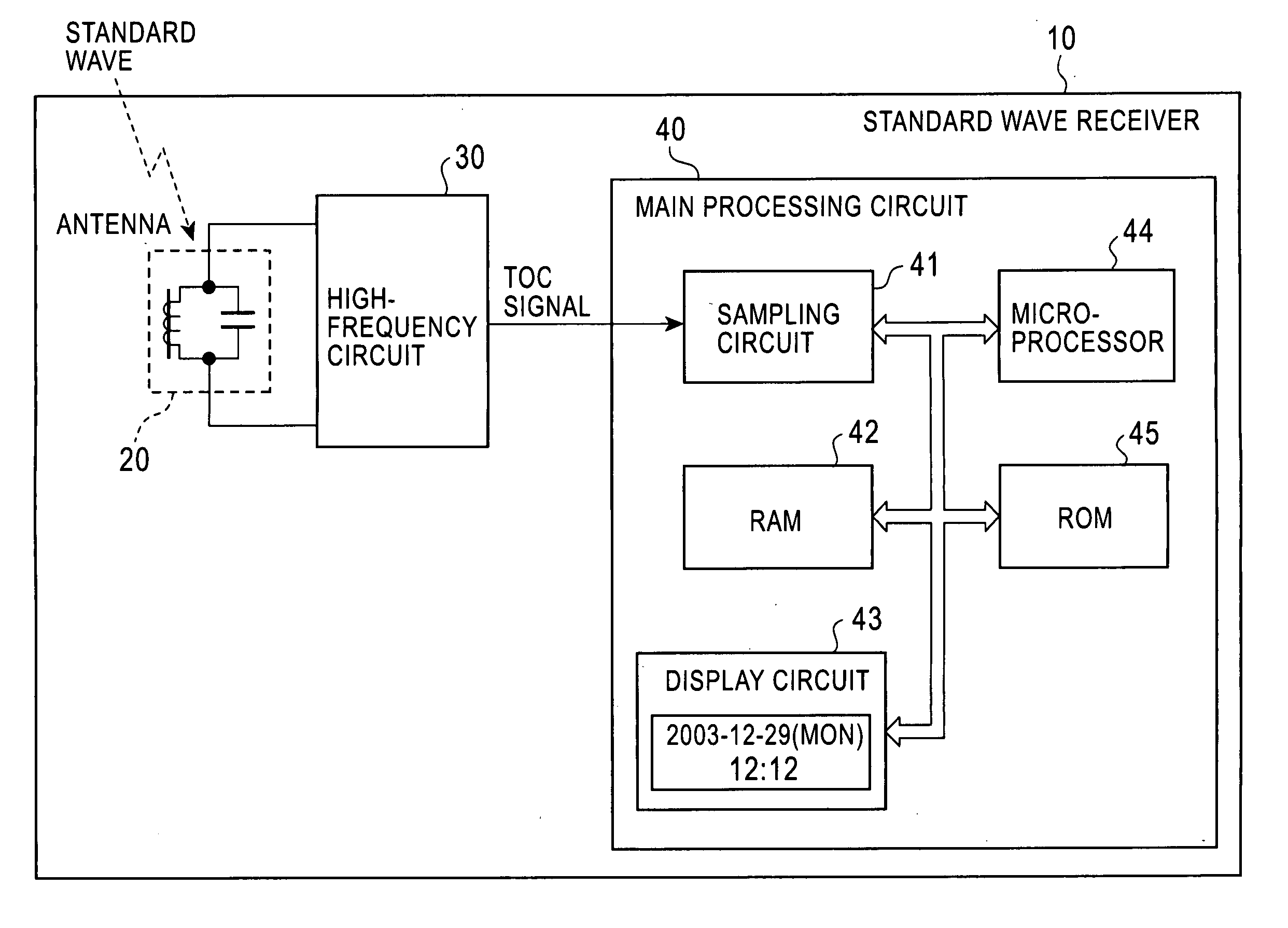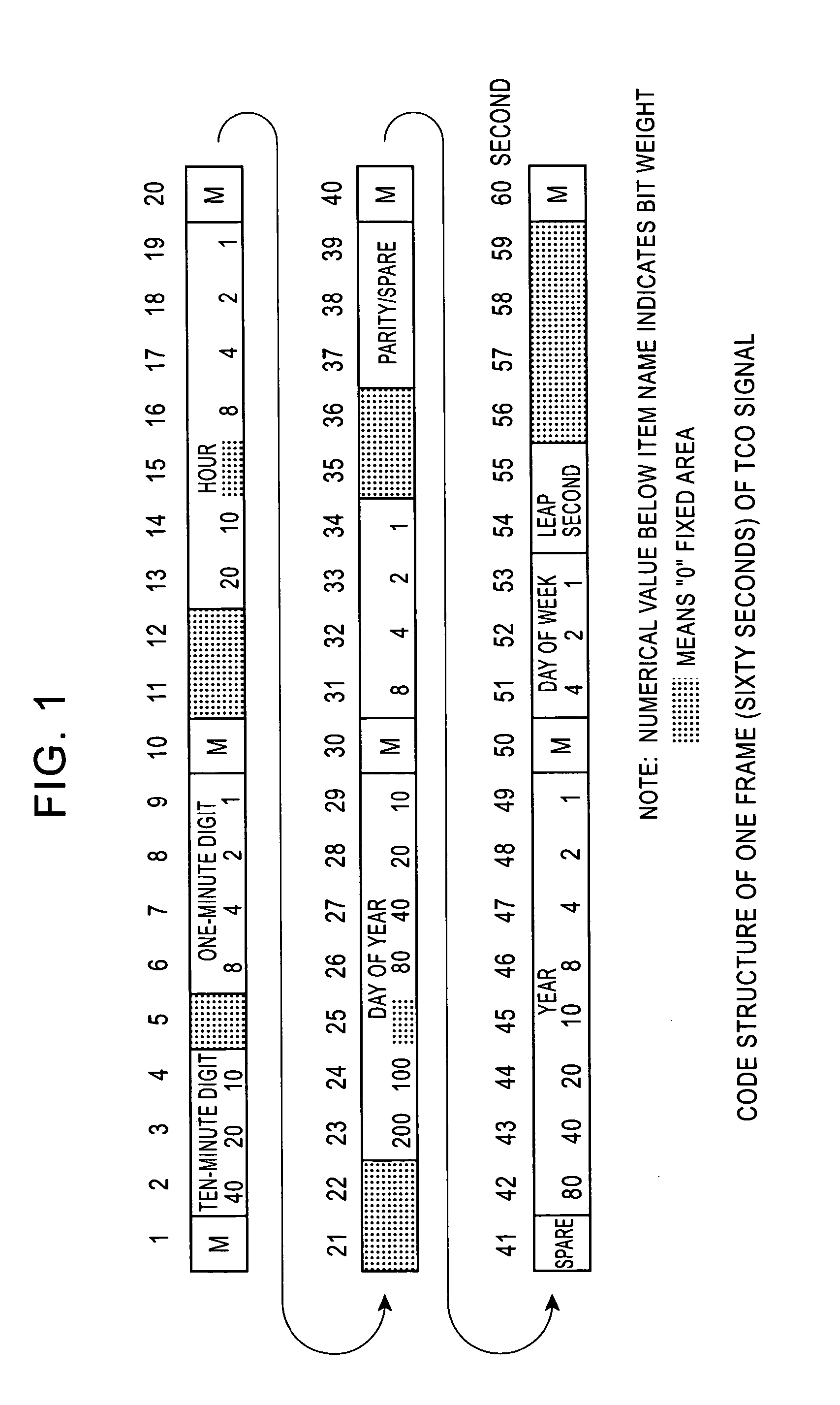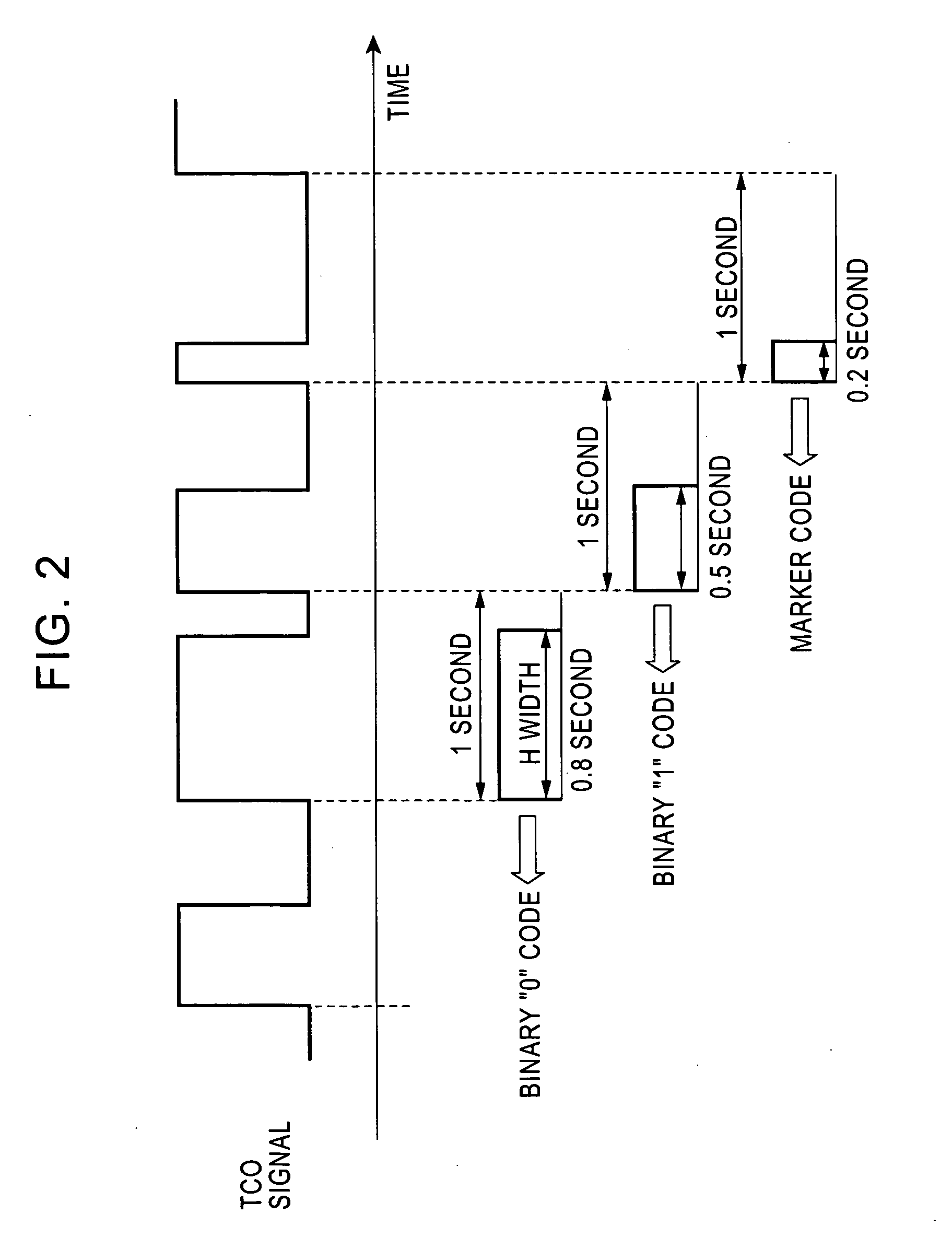Standard wave receiver and time code decoding method
- Summary
- Abstract
- Description
- Claims
- Application Information
AI Technical Summary
Benefits of technology
Problems solved by technology
Method used
Image
Examples
first embodiment
[0032]FIG. 3 shows a structure of a standard wave receiver in the invention. The standard wave receiver executes a time code decoding method according to the invention. Referring to the figure, a standard wave receiver 10 includes an antenna 20, a high-frequency circuit 30, and a main processing circuit 40. The main processing circuit 40 includes a sampling circuit 41, a RAM 42, a display circuit 43, a microprocessor 44, and a ROM 45. The standard wave receiver 10 could be, for example, a device such as a radio controlled watch (clock) that calibrates displayed time on the basis of time data of a standard wave.
[0033] The antenna 20 is a receiving antenna for long waves, such as a bar antenna. The antenna 20 receives a standard wave and supplies the standard wave to the high-frequency circuit 30. The high-frequency circuit 30 amplifies and detects such a received wave, extracts a time code signal (hereinafter referred to as TCO signal) carried on the standard wave, and supplies the T...
third embodiment
[0039] Next, the standard wave receiver 10 performs position marker position detection and an on-the-minute marker position detection with respect to the code sequence (step S105). The position marker position detection and the on-the-minute marker position detection are executed using systems for statistic marker position detection and statistic on-the-minute marker position detection. Such systems will be explained in detail in a Subsequently, the standard wave receiver 10 checks the accumulated sampling data with a format of time codes to recognize digit positions of the respective time codes including a one-minute digit code, a ten-minute digit code, an hour digit code, a day of year digit code, a year digit code, and a day of week digit code (step S106).
[0040] Next, concerning a one-minute digit with a largest change, the standard wave receiver 10 uses an analytical decoding system, which is devised focusing on the periodicity of the one-minute digit, to acquire time data of t...
PUM
 Login to View More
Login to View More Abstract
Description
Claims
Application Information
 Login to View More
Login to View More - R&D
- Intellectual Property
- Life Sciences
- Materials
- Tech Scout
- Unparalleled Data Quality
- Higher Quality Content
- 60% Fewer Hallucinations
Browse by: Latest US Patents, China's latest patents, Technical Efficacy Thesaurus, Application Domain, Technology Topic, Popular Technical Reports.
© 2025 PatSnap. All rights reserved.Legal|Privacy policy|Modern Slavery Act Transparency Statement|Sitemap|About US| Contact US: help@patsnap.com



